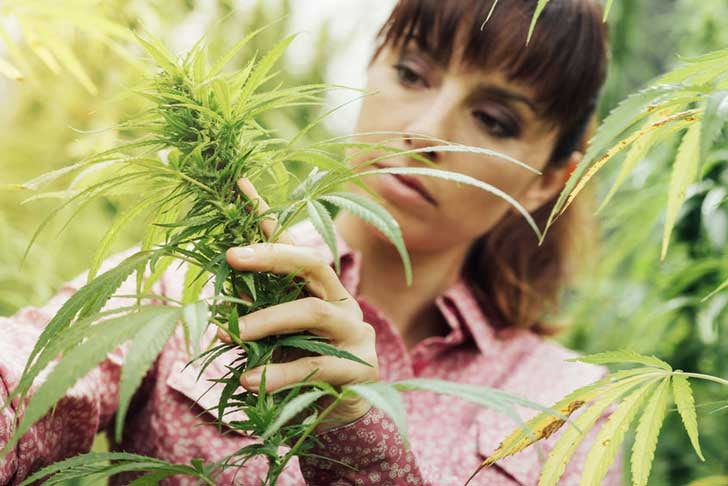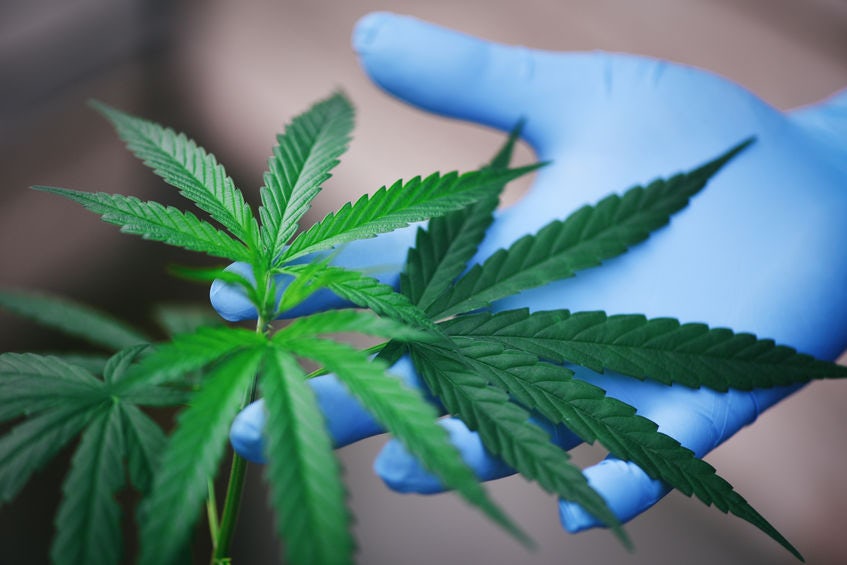There are many different experiences that can come from using cannabis. But one of the most noticeable impacts that cannabis can have is how it affects our thoughts.
High thoughts – the way we think when we are actively high on cannabis – can take us by surprise with their dramatic shifts. Sometimes funny or absurd, sometimes creative or seemingly genius, and sometimes downright dark and scary, high thoughts can leave us inspired or utterly confused.
These differing thought patterns can be unpredictable in how they manifest for individuals. But they can mostly be attributed to the way that THC and other compounds in cannabis impact the brain.
Why do we think differently when we are high?
When we use cannabis, its many cannabinoids, such as THC and CBD, activate our natural endocannabinoid receptors. This leads to most of cannabis’ numerous effects on the body and mind. One important impact from THC – the main psychoactive component of cannabis – is an increase in cerebral blood flow to certain parts of the brain. 1
In one study, researchers found that many areas of the brain had increased blood flow after THC consumption. They theorized that the behavioral and mental changes associated with cannabis intoxication may be connected to increased cerebral blood flow, and increased functional activity, of certain areas of the brain. 2
In previous work by the same authors, cerebral blood flow was found to correlate more strongly with cannabis intoxication than even the amount of cannabinoids in someone’s bloodstream. 3
The frontal region of the brain showed the largest increases in cerebral blood flow after THC consumption, and is responsible for some key brain functions. Normally, the frontal lobes are believed to be responsible for our level of wakefulness, as well as some very important cognitive functions like abstract thought, synthetic reasoning, organization of independent behavior in time and space towards future goals, sensory data processing, cognition, volition and initiation of motor activity.

Given that the frontal lobes are responsible for all these important thinking skills, it’s hardly surprising that boosting that area of the brain with increased blood flow, and thus increased functional activity, would lead to some wildly different thoughts.
But the frontal lobe isn’t the only part of the brain contributing to high thoughts. The insula, which is involved with sensory perceptions like taste and flavor, as well as mediating stress induced cardiovascular responses, also saw significantly increased blood flow.
Researchers also noted the right hemisphere, which is associated with mediating emotions, was substantially more activated than the left. The cingulate cortex, which also showed high correlations between cerebral blood flow increases and self-reported THC intoxication, is believed to regulate the interactions between sensory information, emotions and pain. 4
One important thing to point out is that while acute THC consumption appears to be correlated to increased cerebral blood flow and therefore to the alterations in the way we think, these changes in brain function are temporary.
On the other hand, after chronic consumption of THC, preclinical research suggests that there may be reduced blood flow and neural activity in certain regions of the brain (especially the ventral and dorsolateral prefrontal cortex) and these alterations may be negative rather than positive. 5
There is also some evidence to suggest that CBD has its own unique effect on cerebral blood flow. Some research has shown that CBD may also increase blood flow to regions of the brain involved in memory processing, particularly the hippocampus. This effect could help explain why early research on CBD has been so promising for brain related illnesses like alzheimers, addiction, and PTSD. 6
Who experiences high thoughts and why?
High thoughts can impact anyone who has consumed THC, but they are more likely for some than others.
- Studies show that those who have never used cannabis before, or who use it infrequently, tend to have more noticeable or extreme high thoughts than those who use cannabis regularly. 7
- There can also be big differences between individuals in terms of how cannabis impacts their thoughts – which could suggest genetic or contextual factors matter.
- Dosing can also make a big difference on how much your thoughts shift. A small amount of cannabis may actually produce totally different effects than a big amount. In the same study mentioned above, participants who were mildly intoxicated with THC reported feeling more sociable and relaxed, while at higher doses they reported being less sociable, not thinking clearly, worse memory, paranoia, and rarely, hallucinations. This is more evidence of what is known by scientists as the biphasic effect of cannabinoids.
What are some typical ‘high thoughts?’
There are so many different ways our thoughts might change when we get high. In the study about how it feels to be high, these were the most common changes participants reported:
- being more relaxed
- feeling happy
- laughing more
- having altered sensory experiences
- changes in time perception
- improvements in concentration and memory
- increased creativity
- thinking more deeply
Additionally participants who consumed cannabis alone reported different effects. Solo consumers reported more mellow effects and those consuming as a group found more euphoria, laughter, and wakefulness.
On the other hand, some participants did have negative side effects and experienced sensations such as:
- paranoia
- anxiety
- decreases in concentration and memory
- hallucinations or visions
Here are a few of the more commonly reported ways high thoughts might manifest:
Mind blowing ideas
One trope about cannabis use is that it will give you the feeling that you are having the most brilliant ideas of your life, but then the next day, the ideas don’t seem as great. While this is the case for some people, others report coming up with great ideas while high; and the science suggests this is totally possible.
As mentioned above, cannabis increases blood flow to the parts of the brain associated with many different aspects of thought and decision making. This increased flow is usually associated with increased functionality; so once you get high, you may find your brain buzzing with ideas. In fact, more than half of cannabis users report cannabis increases their creativity.
Some studies have found it to increase divergent thinking (a type of creative thinking), but the improvements in divergent thinking were only found for low doses. Too much THC and divergent thinking goes down. This might be why we get such different accounts of whether cannabis helps or hurts our brillient creative thinking. This is also why dosing is such an important aspect of any session. 8
Funny thoughts
When you’re high, you might also find that everything you think about is hilarious or absurd. If you find yourself laughing at everything, this is likely because THC is increasing blood flow to parts of your brain associated with laughter (specifically the right frontal and the left temporal lobes). As they become overactive, everything just seems funny. 9
Additionally, THC can also promote happy, relaxed, blissful feelings, much like an antidepressant or antianxiety medication. These happy feelings may make it easier to laugh and enjoy the humour in life. 10

Anxious, paranoid or intrusive thoughts
While many high thoughts are pleasant or hilarious, some are exceptionally unpleasant. Cannabis can lead to anxious, paranoid, negative thoughts. Sometimes these can be intrusive in our mind and we are unable to stop thinking about them. Those who experience these thoughts regularly, usually don’t enjoy getting high.
Unfortunately, the same way that cannabis can induce relaxation, joy and humor, it also can send us hurtling in the other direction. Cannabis has biphasic effects; this means that most effects can be reversed at a high enough dose.
While a low dose may induce a happy feeling, a high dose of the exact same cannabis may flip the switch back in the other direction – inducing negative, anxious feelings. The ideal dose tends to vary from person to person, so it’s always a good idea to start low and increase your dose slowly. 11
Acute psychosis (rare)
In rare cases, cannabis can also induce a sort of temporary psychosis. Those who experience this report hallucinations, visions and illusions. Some might think they see something moving that is still, or think they hear voices in indistinct white noises like the whurr of a fan. In most cases these effects are short lived and end after the high. 12
Unfortunately, some research does tie high THC cannabis use to schizophrenia, and suggests that cannabis use (particularly for adolescents and young adults) might put some at risk for schizophrenia later in life.
Still this association is mediated by factors like family history of mental illness, genetics, and childhood trauma. While researchers can’t say yet whether cannabis causes longer lasting psychosis for some, or if it is simply associated with it due to other factors, there is reason for caution – especially for younger cannabis users.
How long after consuming cannabis do you typically experience ‘high thoughts?’
- In studies on how cannabis impacts mental functioning, most regions of the brain showed significant changes 60 minutes after using low doses of cannabis. 13
- But for higher dose cannabis, there were changes after 30 minutes and 60 minutes, with the peak coming at 30 minutes.
- The level of impact varies per person and some report it taking more or less time before they feel the high.
- The method being used can also impact timing, with smoked or vaporized cannabis, as well as new fast acting edibles, impacting people faster than traditional edibles.
How long do high thoughts last?
High thoughts can also vary from person to person, but the biggest factor in how long they last is the method of consumption.
Traditional edibles, for example, can last for much longer than other methods like vaping or smoking. Therefore edible products also provide a longer window for high thoughts to occur. In most cases, high thoughts should subside in a few hours after the max brain levels of THC has passed, but certainly the lingering effects of edibles have been known to last up to12 hours or longer. 14
Anecdotal reports on the internet suggest effects lasting 24 hours are uncommon but can occur, and it’s sometimes called a “weed hangover.” And while uncommon, it can definitely happen, particularly in people with unique THC metabolism, or after a very large dose effects can be prolonged as well. Still, once you are no longer actively intoxicated, the high thoughts should generally subside.

In rare cases, cannabis has been tied to episodes of psychosis that last longer than the period of intoxication, but still tend to subside if cannabis use is not continued. Unfortunately, these episodes are tied to an increased likelihood of being diagnosed with schizophrenia later in life. While scientists still don’t fully understand this connection, there is reason for caution if you experience episodes like this.
There is also a rare and not well understood phenomenon known as depersonalization that can happen to some people after consuming THC. Any prolonged alteration in emotional state after consuming should be taken seriously and the counsel of a mental health professional is advised.
How to avoid negative high thoughts
While there is no way to directly control where your mind goes when you’re high, there are some strategies you can employ to keep your experience positive and productive:
- Consider your mindset and setting. An important and often overlooked step, the reason for consuming and the setting can have major impacts on the experience.
- Play with the CBD:THC ratio. High THC cannabis (Type I) is the most common, but can also be the most difficult to dose with. We recommend considering type II or type III cannabis for anyone who has experienced intrusive high thoughts, as CBD can alter the effects of THC.
- Choose the right dose. Dosing with cannabis is individualized and varies based on tolerace, age, sex, and unique genetic factors. For example, a functional daytime pain relief dose will be different from a bedtime yoga nidra dose.
Sources
- Roger G. Pertwee, Pharmacology of cannabinoid CB1 and CB2 receptors, Pharmacology & Therapeutics, Volume 74, Issue 2, 1997, Pages 129-180, ISSN 0163-7258, https://doi.org/10.1016/S0163-7258(97)82001-3
- Mathew RJ, Wilson WH, Coleman RE, Turkington TG, DeGrado TR. Marijuana intoxication and brain activation in marijuana smokers. Life Sci. 1997;60(23):2075-2089. doi:10.1016/s0024-3205(97)00195-1
- Mathew RJ, Wilson WH, Humphreys D, Lowe JV, Weithe KE. Depersonalization after marijuana smoking. Biol Psychiatry. 1993;33(6):431-441. doi:10.1016/0006-3223(93)90171-9
- Vogt, B. Pain and emotion interactions in subregions of the cingulate gyrus. Nat Rev Neurosci 6, 533–544, 2005, https://doi.org/10.1038/nrn1704
- Ogunbiyi MO, Hindocha C, Freeman TP, Bloomfield MAP. Acute and chronic effects of Δ9-tetrahydrocannabinol (THC) on cerebral blood flow: A systematic review. Prog Neuropsychopharmacol Biol Psychiatry. 2020;101:109900. doi:10.1016/j.pnpbp.2020.109900
- Bloomfield MAP, Green SF, Hindocha C, et al. The effects of acute cannabidiol on cerebral blood flow and its relationship to memory: An arterial spin labelling magnetic resonance imaging study. J Psychopharmacol. 2020;34(9):981-989. doi:10.1177/0269881120936419
- Being stoned: a review of self-reported cannabis effects Bob Green,David Kavanagh, Ross Young First published: 29 May 2009 https://doi.org/10.1080/09595230310001613976
- Kowal, M.A., Hazekamp, A., Colzato, L.S. et al. Cannabis and creativity: highly potent cannabis impairs divergent thinking in regular cannabis users. Psychopharmacology 232, 1123–1134 (2015). https://doi.org/10.1007/s00213-014-3749-1
- Sneider, J. T., Pope, H. G., Jr, Silveri, M. M., Simpson, N. S., Gruber, S. A., & Yurgelun-Todd, D. A. (2006). Altered regional blood volume in chronic cannabis smokers. Experimental and clinical psychopharmacology, 14(4), 422–428. https://doi.org/10.1037/1064-1297.14.4.422
- Jiang, W., Zhang, Y., Xiao, L., Van Cleemput, J., Ji, S. P., Bai, G., & Zhang, X. (2005). Cannabinoids promote embryonic and adult hippocampus neurogenesis and produce anxiolytic- and antidepressant-like effects. The Journal of clinical investigation, 115(11), 3104–3116. https://doi.org/10.1172/JCI25509
- Rey, A. A., Purrio, M., Viveros, M. P., & Lutz, B. (2012). Biphasic effects of cannabinoids in anxiety responses: CB1 and GABA(B) receptors in the balance of GABAergic and glutamatergic neurotransmission. Neuropsychopharmacology : official publication of the American College of Neuropsychopharmacology, 37(12), 2624–2634. https://doi.org/10.1038/npp.2012.123
- Radhakrishnan, R., Wilkinson, S. T., & D’Souza, D. C. (2014). Gone to Pot – A Review of the Association between Cannabis and Psychosis. Frontiers in psychiatry, 5, 54. https://doi.org/10.3389/fpsyt.2014.00054
- Roy J. Mathew, William H. Wilson, R.Edward Coleman, Timothy G. Turkington, Timothy R. DeGrado, Marijuana intoxication and brain activation in marijuana smokers, Life Sciences, Volume 60, Issue 23, 1997, Pages 2075-2089, ISSN 0024-3205, https://doi.org/10.1016/S0024-3205(97)00195-1
- Grotenhermen F. Pharmacokinetics and pharmacodynamics of cannabinoids. Clin Pharmacokinet. 2003;42(4):327-360. doi:10.2165/00003088-200342040-00003
Sign up for bi-weekly updates, packed full of cannabis education, recipes, and tips. Your inbox will love it.

 Shop
Shop Support
Support
















